table of contents:
Purchasing a Juki sewing machine means investing in precision and performance . However, to fully exploit its potential, understanding how it works is essential. More than just a user manual, this article is your passport to successful sewing projects. The Juki sewing machine user manual provides a valuable foundation for mastering settings, avoiding common mistakes, and gaining efficiency from the very first uses.
Whether you're a beginner or experienced, we'll explore the key steps for threading, adjusting, and maintaining your Juki, so every stitch is perfect and your creativity knows no bounds. Also, discover how to maintain your sewing machine so it lasts for years to come, with simple tips for adjusting thread tension and choosing the right presser foot.
Discover the world of Juki sewing machines
Before diving into the technical world of Juki models , it's essential to understand how they work. A Juki sewing machine manual not only allows you to master each feature, but also to appreciate the specific features that make this brand famous. Discover in this guide the iconic models, their strengths, and why so many sewers trust Juki for their projects.
The specific features that make Juki famous
Juki is a Japanese company that has been manufacturing sewing machines since 1938. The brand combines traditional craftsmanship with technological innovation. Juki means "fortified land" in Japanese, reflecting the durability of its products.
Juki sewing machines are distinguished by their Swiss watchmaking precision and aerospace-grade durability. They combine precision engineering with intuitive functionality. Whether you're a beginner or an experienced sewer, a clear and detailed Juki sewing machine instruction manual will guide you step by step to get the most out of each feature.
Looking for the perfect Juki sewing machine? Explore our wide selection at Verotex and find the model that suits your needs.

The different models of Juki machines available
Juki offers mechanical machines like the HZL-353 ZR and sophisticated electronic models like theHZL-60H . These machines are suitable for all skill levels , from the occasional beginner to the advanced sewer.
|
Comparison of the main Juki HZL models with characteristics and prices |
||
|
Model |
Main features |
Price |
|
Juki HZL-353 ZR |
High-end mechanical model | 750 stitches | Suitable for beginners | Standard drive system |
€384.00 |
|
Juki HZL-60H |
Entry-Level Electronic Machine | 40 Stitches | 7-Claw Box Drive System | Touchscreen LCD Display | LED Lighting |
€554.00 |
|
Juki HZL-DX5 |
Electronic Intermediate Model | 150 Stitches | Improved Drive System | Simplified Embroidery Features |
€899.00 (estimate) |
The Juki HZL-DX7 embodies the brand's excellence with its drive system inspired by industrial machines. This model offers 287 sewing stitches and an LCD touchscreen, ideal for complex projects.
Why choose a Juki sewing machine?
Juki guarantees a machine that will last for decades without fail. The stitch precision and versatile features appeal to both beginners and seasoned professionals.
Compared to other brands, Juki stands out with its direct drive , which transmits all the power to the needle. Its Box Feed system prevents fabric slippage. This is a decisive technical advantage for demanding jobs.
Getting Started with Your Juki Sewing Machine
To get started sewing with your new ally, the Juki sewing machine instruction manual is your best guide. It guides you step by step, from installation to start-up, including familiarizing yourself with essential functions. With this valuable resource, you can quickly master the basics and take full advantage of your Juki machine's performance.
Installation and start-up of your machine
Carefully unpack your Juki machine and check the components. Typically, the machine comes with an instruction manual, a standard presser foot, a bobbin, and needles. To fully understand how the machine works, first read the instructions in the manual.
Here are some essential steps to take at first:
- Ensure the needle is properly positioned and secured
- Check that the bobbin is properly engaged in its housing
- Walk the wire path to locate the guides
- Test the electrical connection with the pedal and cable
- Check out the accessory box for useful tools
Start by setting the thread tension to the standard position, then raise the needle using the needle lever. Use the standard straight stitch for your first attempts and remember to test it on a piece of fabric . Before using it for a long time, it can also be useful to check that everything is working perfectly and avoid future problems.

Mastering the basic functions of your Juki
On your Juki machine, you'll find basic controls like the stitch selector dial, the reverse stitch lever, the tension dial, and the presser foot lifter. All Juki machines retain these basics.
The first step in mastering the sewing machine is to sew a straight stitch to achieve straight, clean seams. Then, you can move on to a zigzag for stretch fabrics.
Once you've mastered these basics, feel free to explore the machine's decorative stitches. Before finalizing your project, test each setting on a sample, remembering to adjust the length and width according to your chosen fabric.
Want to discover Juki quality? Browse the different sewing machine models available at Verotex now!
Maintenance and troubleshooting common problems
To ensure optimal performance and extend the life of your machine, the Juki sewing machine instruction manual remains an essential reference. It details the key steps for regular maintenance, while helping you diagnose and resolve common issues such as thread tension or fabric feed. Following these recommendations will save you a lot of hassle and indicate when to call a professional.
Regular maintenance to extend lifespan
Maintain your Juki sewing machine daily to prevent jams. Ideally, you should clean dust and lint after each use. An annual service is sufficient for occasional machines, ensuring smooth operation for decades.
Clean the bobbin, feed dogs, and rotary hook regularly. For delicate areas, use a soft brush, which won't scratch the machine. The Juki sewing machine instruction manual details the areas to clean and the products to use to avoid damaging the internal components.
Lubricate the moving parts with specific oil, then check that the mechanisms are working properly after each cleaning. If you have any doubts about the frequency or method of maintenance, refer to the Juki sewing machine instruction manual, which offers a maintenance schedule adapted to each type of use. Proper maintenance also helps preserve the sewing machine's power , essential for effortlessly sewing thick or multi-layered fabrics.
Troubleshooting Thread Tension Problems
Frequent thread breakage is a sign of imbalance. To avoid this type of problem, check the threading, the quality of the thread, and the correct needle selection. Adjust the tension dial between 4 and 5 for standard cotton. The Juki sewing machine instruction manual provides precise guidelines on the recommended tension settings for different types of thread and fabric, which significantly reduces the risk of breakage.
Also adjust the machine tension to the fabric you're sewing. Decrease it for stretchy materials and increase it for thicker fabrics. On a Juki HZL-DX7, use the zigzag stitch for more flexibility. Learn how to choose the right thread for your fabrics to avoid unwanted breakage.

Managing fabric training problems
Uneven feeds indicate dirty feed dogs or an unsuitable foot. If you are working with slippery or thick fabric, use the Juki Dual Feed Foot .
For slippery materials, a Teflon or roller foot is best. For thick fabrics, simply release the pressure on the presser foot. If using a Juki HZL, lower the feed dogs for free-motion embroidery.
When and how to get your Juki repaired?
Uneven stitches, tangled threads, and abnormal noises indicate a serious problem within the machine. For repairs, contact Verotex , a specialist with many years of experience, which also offers Juki sewing machine rentals , a convenient solution for continuing your work during maintenance.
The Juki warranty covers manufacturing defects. A complete overhaul costs around €80, depending on the workshop. Spare parts are available through authorized dealers.
Accessories and advanced techniques for your Juki
Just like purchasing a Juki flatbed stitcher , Juki sewing machines come with basic presser feet . The zigzag foot is for sewing stretch fabrics, the automatic buttonhole foot is ideal for creating precise buttonholes, and some models include a 32-foot presser foot kit for various projects. To properly identify the purpose of each accessory and how to install it, the Juki sewing machine manual is a valuable resource, often with step-by-step illustrations.
Here are the additional presser feet recommended to expand the possibilities of a Juki sewing machine:
- The zippered foot for discreet poses
- The Juki magnetic guide for perfect straight lines
- The hemmer foot for flawless rolled hems
- The Quilting Guide for Regular Projects
The zipper foot is easy to install on a Juki sewing machine. To install, place it aside and sew close to the zipper. Use the transparent foot to monitor the stitching. If you're new to these accessories, the Juki sewing machine instruction manual will help you understand the specific settings for each presser foot, ensuring professional results.
Juki sewing machines combine precision and durability, with models suitable for everyone. Now that you've mastered the basics and how to maintain your machine, all that's left is to take on bold projects.
Find your next Juki sewing machine! Visit Verotex and let our experts guide you through our diverse range.


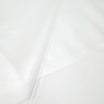

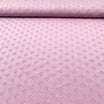
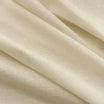
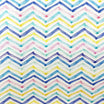
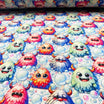




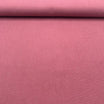
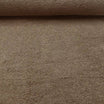

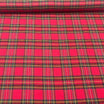
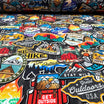
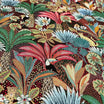
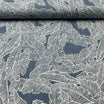

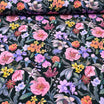
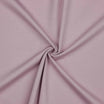
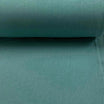
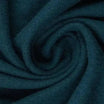

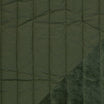
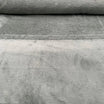
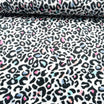

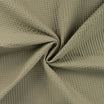

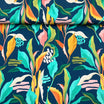
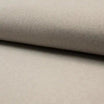
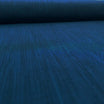

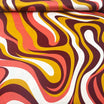
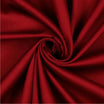










Leave a comment
All comments are moderated before being published.
This site is protected by hCaptcha and the hCaptcha Privacy Policy and Terms of Service apply.